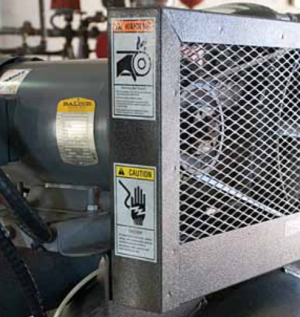
Image from Safeguarding Machinery and Equipment by WorkSafeBC
Automated machines call for the greatest concern with respect to safeguarding. I thought about this concept today when I spoke with Ian Rood, who specializes in machine safeguarding and process design.
Ian is one of the guest speakers at the 2014 Make it Safe.
“The machine doesn’t know you’re there, so if it’s got to move from Point A to Point B, and you get in the way, it’s not going to stop,” he says. “If there is an electrical, pneumatic, or hydraulic system involved, it should be assessed.”
In Ian’s break-out session, Machine Guarding, he’s presenting a case study of a recent project, from assessment to remediation. It’s on Day 2 from 1 to 2:15 p.m. He’s also covering regulatory requirements, using safeguards as an alternate form of lockout, and the risk assessment model.
Other speakers at the conference are looking at ergonomics, MSIs, mental health, anti-bullying, new WHMIS requirements, and why it’s good business to work safely.
“If we make a business case for safety – if we take the safety aspect out of it…forgetting about the person who’s getting hurt and having their life changed – the cost to the employer is not worth it,” Ian says.
“You could have spent your money on safeguarding or you’re going to have to spend your money on fines and then spend your money on safeguarding. There are efficiencies to be gained by using available technology and safeguards as an alternate form of lockout, which can save an organization significant downtime.”
Definition of safeguarding and lockout?
For an in-depth look at these definitions, start with Safeguarding Machinery and Equipment: General Requirements from WorkSafeBC.
The publication describes safeguarding as “the first line of defence in ensuring the safety of workers operating powered machinery and equipment,” and it includes “barrier guards, safety devices, shields, awareness barriers, warning signs, or other appropriate means, used singly or in combination.”
“Lockout,” it says, “protects workers when machinery or equipment is shut down for maintenance (including repairs and clearing jams).”
Thanks to Ian for the preview!


